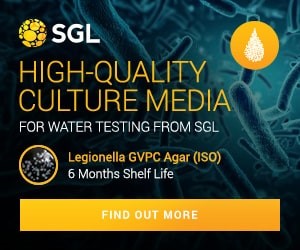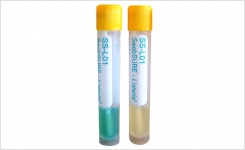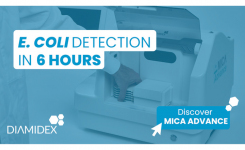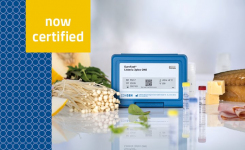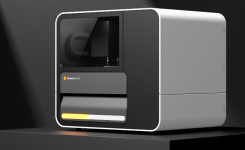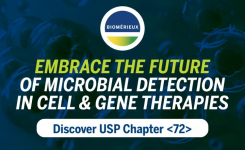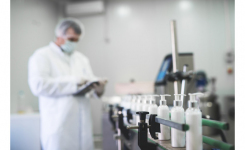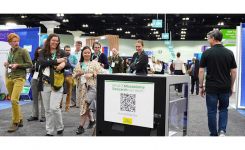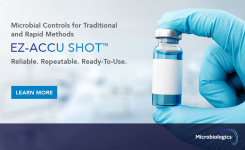Bacterial Toxin Detection - Cholera
go back to news archivesThe scale of the problem
Cholera continues to be a major public health concern in developing countries. The disease is a toxin-mediated bacterial infection, caused by certain serogroups of Vibrio cholerae, that has the ability to cause outbreaks of epidemic proportions. In the last 200 years there have been at least 7 cholera pandemics, of which the latest still continues[1].
The current pandemic, which began in 1961 in Indonesia, has now circled the globe, affecting countries in Asia, Africa, Europe and South America. In 2003 outbreaks were reported in many countries, including South Africa, Mozambique, the Democratic Republic of the Congo, Liberia and Iraq[2].
Up to the early 1990s, of over 100 different serogroups, only V. cholerae serogroup O1 was known to be capable of causing cholera. However, 1992 saw the unprecedented appearance of a new, non-O1 epidemic strain in India. This was later to be identified as V. choler ae serogroup O139, and the outbreaks caused by this new strain have been heralded by some to be the start of the 8th cholera pandemic[1].
Historically, the disease has been associated with the movement of large groups of people. This is illustrated in the current cholera outbreak that is ravaging Liberia's capital, Monrovia. Since June 2003 over 10,000 people have been affected and by mid September, over 2,000 new cases were being reported every week, mainly amongst displaced people. This is thought to be a result of the movement of thousands of people to the capital, combined with insufficient water and poor sanitation[3].
Cholera disease
The cholera enterotoxin produced by V. cholerae serogroups O1 and O139 causes an increase in cAMP within the cells of the gastro-intestinal tract, resulting in the secretion of water and electrolytes. The disease manifests with profuse watery diarrhoea, vomiting and dehydration, often with associated leg cramps due to ele ctrolyte imbalance. The disease can lead to severe dehydration and death if treatment is delayed.
It is estimated that approximately 75% of cholera cases are asymptomatic. Of the 25% that present symptoms, the majority are mild to moderate. Less than 10% develop typical cholera and in only 2% of cases does the illness progress to life-threatening 'cholera gravis'[4,5]. In severe cases, death may occur within hours of the onset of disease.
Cholera is transmitted through drinking water or eating food contaminated with toxin-producing V. cholerae. It spreads rapidly in areas with inadequate treatment of sewage and drinking water.
Treatment
Cholera is life threatening but can be treated easily. Treatment involves immediate replacement of fluids and salts, either orally or, in severe cases, intravenously[6]. With prompt rehydration the case fatality rate is less than 1% but in an unprepared community the death toll may be as high as 50%[5].
Anti biotics may shorten the course of the disease and reduce the severity of the symptoms. However, antibiotic resistance has been a growing problem in many parts of the world. Consequently, antibiotic susceptibility should be determined at the beginning of an epidemic and monitored periodically throughout[4].
Identification
Diagnosis of cholera is confirmed by the isolation of V. cholerae O1 or O139 from stool culture. Isolates should be serotyped and they can also be tested for toxin production[1,4,7].
The detection of Cholera Toxin (CT) production is an important indicator of virulence. When the first case of imported V. cholerae serogroup O139-associated cholera occurred in the USA in 1993, standard laboratory techniques determined that this was a non-O1 strain and yet found it to produce toxin[8].
With the emergence of V. cholerae O139, the importance of a serogroup acquiring the potential to cause epidemics has become evident. The danger of other toxin producing serogroups emerging should not be discounted. Existing serological methods may not be able to detect a new serogroup. However, confirmation of the production of CT would alert scientists to the possibility of a new epidemic strain.
Testing for Bacterial Toxins
The Thermo Scientific Reversed Passive Latex Agglutination (RPLA) Toxin Detection Kits are convenient, simple to perform assays that give clear, easy to read results in less than 24 hours - significantly faster than alternative methods. Latex particles are sensitised with antibodies to the target toxin. In the presence of that toxin, the latex particles agglutinate to form a clearly visible lattice structure. These tests are highly sensitive and specific, requiring minimal effort and no specialised equipment, making them ideal for use outside larger reference laboratories. In addition to detecting Vibrio cholerae enterotoxin, the Thermo Scientific VET-RPLA test will detect E. coli heat-labile enterotoxin.
| | Tests are also available for staphylococcal enterotoxins A, B, C and D (SET-RPLA), Bacillus cereus enterotoxin (diarrhoeal type) (BCET-RPLA), E. coli verotoxins VT1 and VT2 (VTEC-RPLA), staphylococcal toxic shock syndrome toxin (TST-RPLA) and Clostridium perfringens type A enterotoxin (PET-RPLA). |
| References: |
Source : Thermo Scientific. View archived contact details
Posted on February 19, 2004


